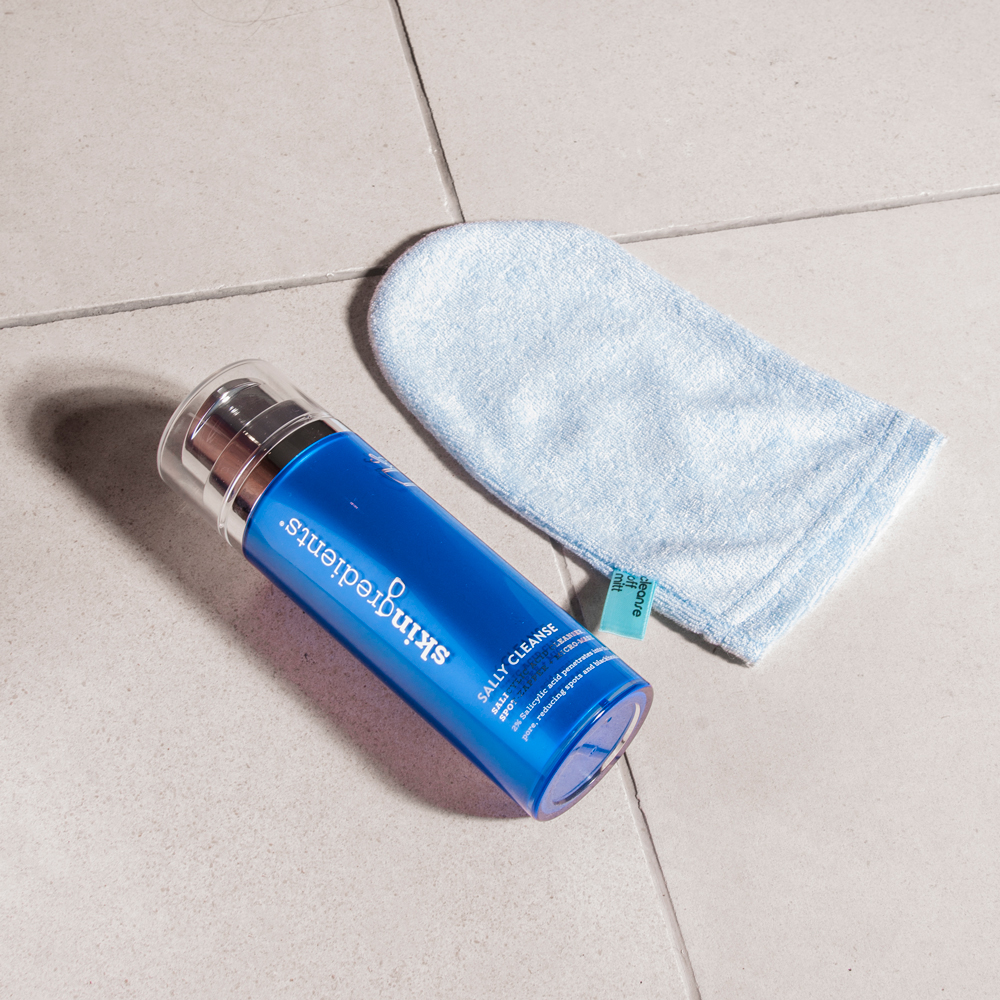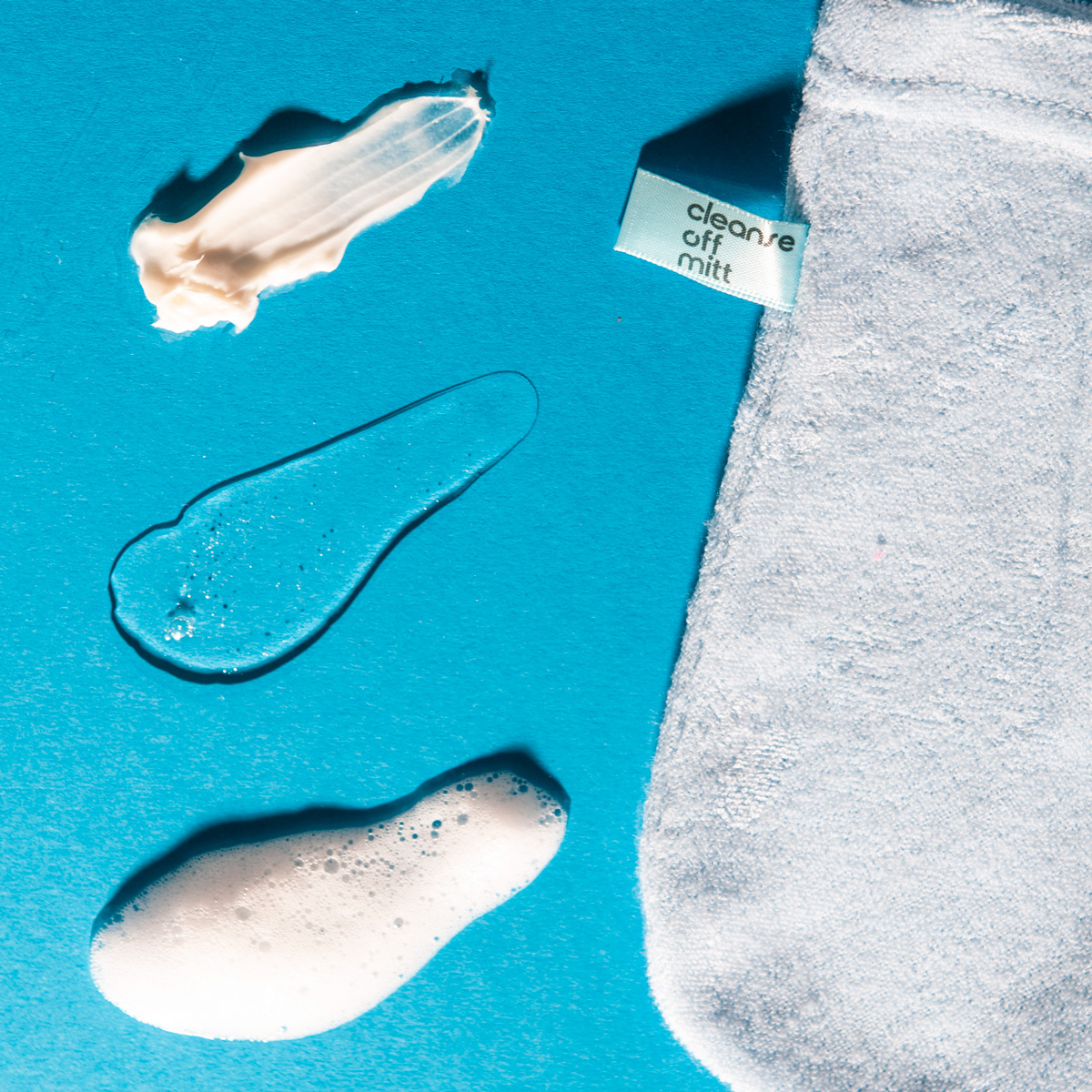
We’ve all heard of exfoliation, but what does it actually mean? Exfoliation is the name given to the process of removal of old skin cells from the surface of the skin. It’s achieved by mechanical means (a scrub, or glove), or chemical (an exfoliating acid). By removing dead skin cells that are perhaps clinging on for too long, the skin can reflect light better, will have a smoother texture and will be less likely to become congested.
Nerdie Bit:
Desquamation is the skin’s own process of exfoliation, by which it sloughs off dead skin cells. A skin cycle lasts approximately 28 days, but as we age, our skin loses the ability to exfoliate itself as effectively as it did when we were younger.
As the rate of exfoliation slows, this can lead to rougher, drier skin – which can be flaky or patchy, or dull in appearance.
This slower rate of exfoliation can also lead to skin issues like breakouts. Breakouts can occur when pores become blocked with dead skin, excess sebum, SPF, or makeup, and this is not effectively removed.
What is Mechanical Exfoliation?
Mechanical exfoliation is done by physically sloughing off the dead skin cells by using an exfoliating glove, or a scrub.This will only remove skin cells on the very top of the skin’s surface.
Scrubs usually have a gritty texture. They might contain jojoba beads, coffee grounds, sugar granules, oats – all ingredients which have a rough enough texture to effectively remove skin cells. The issue with mechanical scrubs lies in the fact that the rough texture can irritate skin due to hard edges (sometimes of differing sizes).
What is Chemical Exfoliation?
The term ‘chemical’ or ‘acid’ exfoliation can raise eyebrows, but it’s nothing to be frightened of. We are living in a chemical world, and we are chemical hoomans. Each one of us is essentially one big encapsulated bath of chemicals, held in by a chemical membrane. Exfoliating acids are nothing to be fearful of – they are an effective form of prompting your skin to exfoliate! And our skin is acidic too – just saying.
Chemical exfoliants consist of polyhydroxy acids (PHAs), alpha hydroxy acids (AHAs), and beta hydroxy acids (BHAs), like glycolic acid, lactic acid, mandelic acid, retinol, salicylic acid… the list goes on and on.
AHAs, like lactic acid or glycolic acid, are water-soluble acids which help to exfoliate the upper layer of your skin. They are all different in terms of molecular size, speed, function, and what they target, such as their impact on oil, etc!
BHAs, like salicylic acid, are oil-soluble, which means that they cut through oil. They penetrate deeper into the pores of your skin and can help to exfoliate and dissolve debris – but this is only applicable if you’re dealing with an excess of oil!
Skingredients Exfoliators
There are lots of quiet exfoliators in the Skingredients range, helping your skin to turnover at an acceptable rate, and doing it all so silently and gently that you don’t have to bother your head about it, and with no need for scrubs or additional exfoliating products!
Skingredients PreProbiotic Cleanse
This gentle daily cleanser and makeup remover not only brings pre and probiotic goodness to the table to keep your skin’s microbiome balanced, it also assists in very gentle exfoliation. Now, when we say gentle, we mean gentle! It contains the active ingredient gluconolactone, which is a PHA (polyhydroxy acid). This ingredient is commonly recommended to anyone with very sensitive skin which may not be able to handle stronger exfoliating acids.
Skingredients Skin Veg & Skin Protein
Skin Veg is your hydrating and anti-ageing pre-serum, working to help your skin absorb serums. It contains PHA, which can help your skin to be more receptive to the serums which are about to apply! PHA is a penetrant enhancer, which is a bonus for Skin Veg! 10 points to you, Skin Veg!
Skin Protein, our vitamin A serum, also prompts the skin to speed up its turnover, and using Skin Veg with your Skin Protein will help it to work that bit harder.
The Skingredients Sally Cleanse cleanser contains 2% salicylic acid, the highest amount allowed for use in cosmetic products in the EU. Salicylic acid is an oil-soluble exfoliating acid, which means that it dives deep into your pores to dissolve anything which might be blocking them, including excess oil, pollution, makeup, and old SPF. All of these are things which might otherwise block pores and lead to breakouts or congestion.
It’s particularly useful for the more oily-skinned hoomans, those prone to congestion, and the teens among us, too!
This exfoliator should be used every third night, using PreProbiotic Cleanse in the mornings and on the nights between using Sally Cleanse.
You can use it as a micro-mask or as a spot-zapper if you’re in dire need of some effective relief from congestion or breakouts. To use Sally Cleanse as a micro-mask, apply it in a thin layer across the face, neck and chest, avoiding the eye area, leave it on for 2 minutes and remove thoroughly. To use it as a spot-zapper, apply it directly to a spot after cleansing and leave it on for 3 minutes, and then remove thoroughly.
Consistent exfoliation (and ensuring not to over-exfoliate) will help your skin to look fresh and feel baby-smooth, just make sure you’re using an SPF too as salicylic acid and other exfoliating ingredients can make your skin slightly more sensitive to light!

